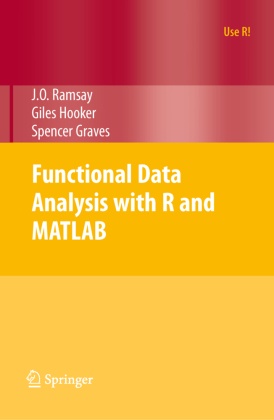
Functional Data Analysis with R and MATLAB
| Verlag | Springer |
| Auflage | 2009 |
| Seiten | 202 |
| Format | 15,6 x 23,5 x 1,3 cm |
| Gewicht | 336 g |
| Artikeltyp | Englisches Buch |
| Reihe | Use R! |
| EAN | 9780387981840 |
| Bestell-Nr | 38798184EA |
Scientists often collect samples of curves and other functional observations, and develop models where parameters are also functions. This volume is especially aimed toward those wanting to apply these techniques to their research problems.
Scientists often collect samples of curves and other functional observations, and develop models where parameters are also functions. This volume in the UseR! Series is aimed at a wide range of readers, and especially those who would like apply these techniques to their research problems. It complements Functional Data Analysis, Second Edition and Applied Functional Data Analysis: Methods and Case Studies by providing computer code in both the R and Matlab languages for a set of data analyses that showcase functional data analysis techniques. The authors make it easy to get up and running in new applications by adapting the code for the examples, and by being able to access the details of key functions within these pages. This book is accompanied by additional web-based support at http://www.functionaldata.org for applying existing functions and developing new ones in either language. The companion 'fda' package for R includes script files to reproduce nearly all the examples in the book including all but one of the 76 figures.
Inhaltsverzeichnis:
to Functional Data Analysis.- Essential Comparisons of the Matlab and R Languages.- How to Specify Basis Systems for Building Functions.- How to Build Functional Data Objects.- Smoothing: Computing Curves from Noisy Data.- Descriptions of Functional Data.- Exploring Variation: Functional Principal and Canonical Components Analysis.- Registration: Aligning Features for Samples of Curves.- Functional Linear Models for Scalar Responses.- Linear Models for Functional Responses.- Functional Models and Dynamics.
